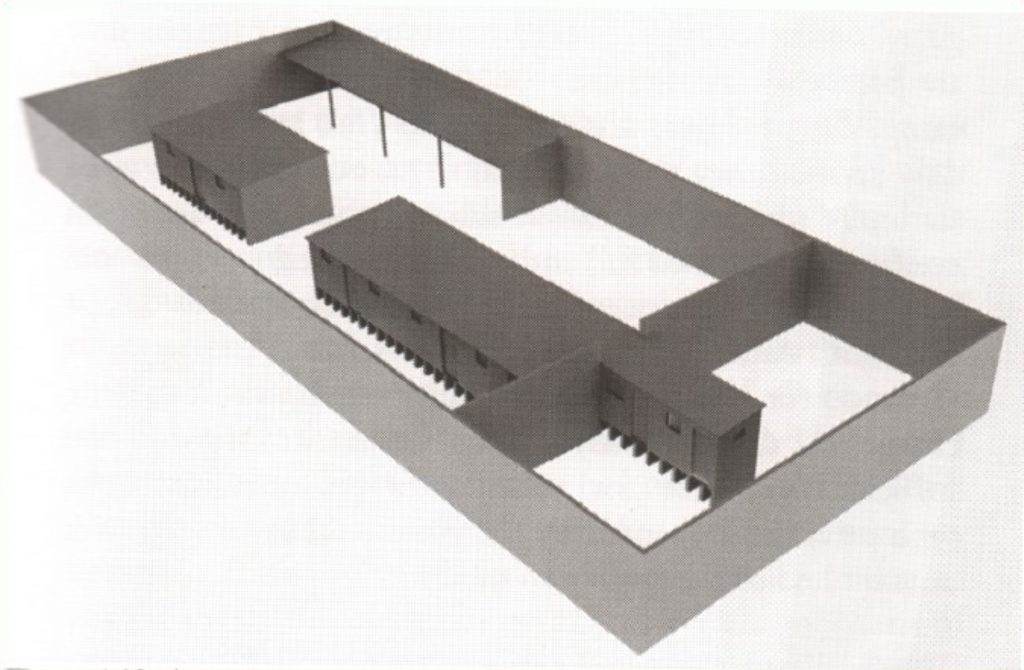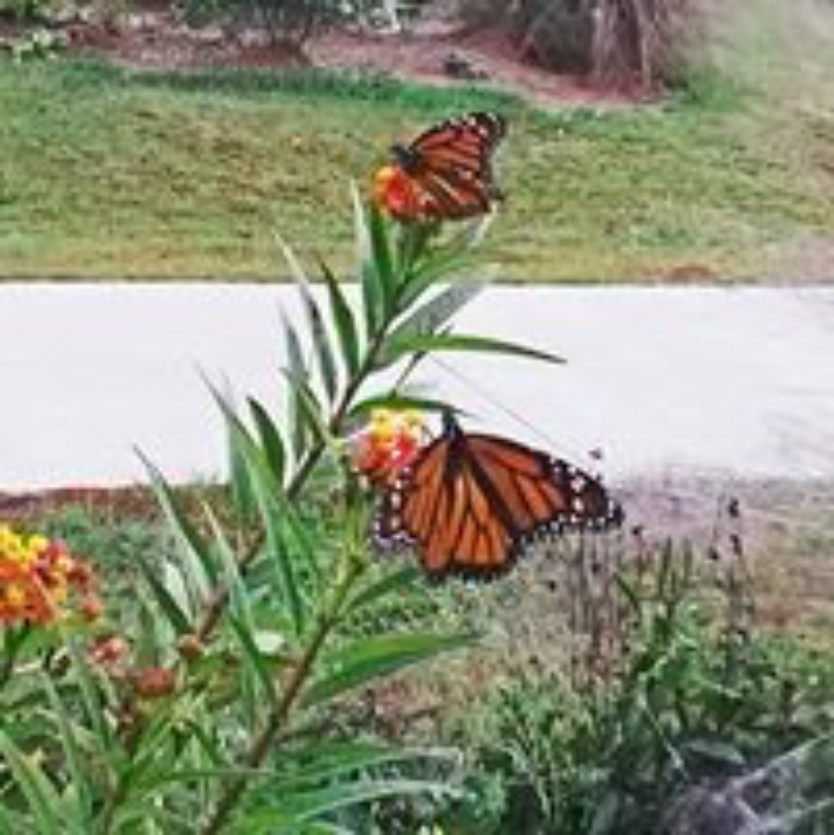Jefferson ISD Students joined us for a day of water testing and teamwork in canoes at Starr Ranch on Caddo Lake.
by admin
Jefferson ISD Students joined us for a day of water testing and teamwork in canoes at Starr Ranch on Caddo Lake.
by admin

Robert Haynes shows students how to make a seed ball.
The Jefferson High School Horticulture Class under the direction of Mr. Ryne Sikes partnered with 100 Kindergarten students at Jefferson’s Primary School on April 16 to produce over 1000 native wildflower seed balls. The high school students showed the younger students how to mix wildflower seeds with clay and compost to form golf ball sized spheres for dispersal on private property in Cass County as part of the Big Cypress Bayou Restoration Project. This is the second time this school year for such an activity.

Kindergarten students make seed balls with the help of high school mentors
The reason for the Cass County selection as a Pollinator Pal site is that it is at the headwaters of Frazier Creek which is the water quality comparator creek for Northeast Texas. The property also belongs to the Gene Weerts family. Michael Weerts, Gene’s son, is with the Texas Forest Service and fully understands the value in converting to wildlife habitat. In response, the Weerts family has sectioned off about 5 acres in the Midway Community as Pollinator Pal habitat. “With abundant springs and seeps right at the watershed divide, this is important acreage for studying the water quality here and comparing it to the entire system all the way down to where Jim’s Bayou enters Caddo Lake in Louisiana,” said Gary Endsley of Collins Academy.
The Weerts family has been on the Midway property for well over 100 years.
 Species planted include host plants like milkweed, nectar sources such as sunflower, prairie verbena, purple cone flower, caryopsis, mealy blue sage, standing cypress, and liatris.
Species planted include host plants like milkweed, nectar sources such as sunflower, prairie verbena, purple cone flower, caryopsis, mealy blue sage, standing cypress, and liatris.
Horticulture students plant milkweed plugs they raised in their greenhouse.
by admin

Physical evidence of “hurricane” type kerosene lamps with decorative cast iron in use at UMBC
Restoration of the 1883 UMBC structure involves a lot of discovery and adaptation. With a primary goal of protecting and maintaining existing materials, our very careful crew is doing a lot of repair and replacement using traditional or substitute materials. In some cases, archaeology on the site or in the walls is informing our restoration decisions. For example, electricity was not available until after the first quarter of the 20th Century. Kerosene lamps lit homes, businesses, and churches prior to the arrival of the Edison bulb. For those more able, decorative cast iron mountings with swing arms and reflectors were popular.
 Kari Dickson, project anthropologist and archaeologist, posed this question early in the discovery work, “would the church have access to the decorative cast iron mountings and chimneys of the more stylish lamps of the period?”
Kari Dickson, project anthropologist and archaeologist, posed this question early in the discovery work, “would the church have access to the decorative cast iron mountings and chimneys of the more stylish lamps of the period?”
During the excavations, artifacts uncovered answered this question. To support this, the decorative beaded rim of the glass chimney was also found. “With these finds, we are able to conclude that these more basic lamps would have been present in this space prior to the introduction of electricity,” stated Ms. Dickson.
Responding to findings, Ms. Dickson recommended the inclusion of the sconce lighting shown at right, which comes very close to the style actually found. These, outfitted with Edison LED “flicker” bulbs, will adorn the walls and provide a special effect for services or events at night.
In addition, while removing bead board for reuse, an old structural arch was discovered over the entrance to the sanctuary. After scrutiny with the known chronology of the structure, it has been determined by our General Contractor that the archway was original and was “matched” with an arch between and above the pulpit and choir loft.
This matching may have been completed when the 10 ft. extension was added to the sancturary.

The arch between the pulpit and the choir loft

Framing for hidden arch inside the front entrance
Both arches were rounded using plywood over 2 X 4 studs behind. The framing was all that was visible inside the front entrance. Again, what was found using architectural archaeology was incorporated into our renovation plan.
by admin
 One hundred and fifty years ago in March and April of 1869, as arrests of the George W. Smith murder suspects approached 30 or more, Union General George P. Buell constructed the Jefferson stockade as part of the Union military post that stretched south of Common Street to the bayou between Houston and Texas Streets – just across the street from the site of the Mother Church, which had been burned in October of 1868.
One hundred and fifty years ago in March and April of 1869, as arrests of the George W. Smith murder suspects approached 30 or more, Union General George P. Buell constructed the Jefferson stockade as part of the Union military post that stretched south of Common Street to the bayou between Houston and Texas Streets – just across the street from the site of the Mother Church, which had been burned in October of 1868.
An area in “Sandtown” where the federal military post and its stockade were located after the murder of George W. Smith and the burning of the “African Church” in October, 1868. The stockade was constructed just south of Cypress Street between Texas Street and Houston Street on the road leading into town.


A 3D rendering of the Jefferson stockade by Craig Hawthorne based on military rec-ords. This drawing was taken from page 49 of Murder in Jefferson: the 1868 Stock-ade Case by Hawthorne and Andrew Spencer
By July 8, the stockade would be enlarged to 7,535 square feet and contain two buildings and a guardhouse (Hawthorne, 2012). To pay for these new facilities, a new tax was levied on the citizens of Marion County amounting to 17 1⁄2 cents per $100 dollars of taxable property. Later, the commissioners court found it necessary to increase the tax to 32 1⁄2 cents per hundred dollars of assessment (Tarpley, 1983).
Reports differ as to the conditions in the stockade. As it is today, opposing sides played to their own political positions. For instance, the Tyler Index, a Radical Republican newspaper, reported the kindness of General Buell as he allowed prisoners to receive food, clothing, and conversation from family and friends. Whereas, R.W. Loughery, the publisher of the Marshall Republic and the Jefferson Times, justified Smith’s death as “demanded by public safety” (Tarpley, 1983) and sensationalized the imprisonment of Jefferson citizens by reporting their on-going struggles with health and hygiene issues.
Works Cited
Hawthorne, A. S. (2012). Murder in Jefferson: The 1868 Stockade Case. US: 23House.
Tarpley, F. (1983). Jefferson: Riverport to the Southwest. Wolfe City, TX: Henington Publishing Company.
by admin
 Utilizing funding from the U.S. Fish & Wildlife Service, Collins Academy is expanding its conservation offerings to schools, private and public properties by improving existing and creating new pollinator habitat. Just as wildlife has suffered from increased fragmentation of land through urbanization, so have bees, butterflies, and hummingbirds.
Utilizing funding from the U.S. Fish & Wildlife Service, Collins Academy is expanding its conservation offerings to schools, private and public properties by improving existing and creating new pollinator habitat. Just as wildlife has suffered from increased fragmentation of land through urbanization, so have bees, butterflies, and hummingbirds.
Not long ago beekeepers would ask farmers to set beehives near croplands in exchange for some honey. Now farmers are paying beekeepers to bring in hives for their crops. A third of the U.S. food supply depends on pollinators. According to a Cornell study published in the May 22, 2012 issue of the journal Public Library of Science ONE, crops pollinated by honeybees and other insects contributed $29 billion to farm income in 2010. The value of directly pollinated crops was $16.35 billion, while the value of indirectly dependent crops was $12.65 billion.
 Currently, Collins Academy is working with its Conservation Leadership Teams at schools to pull aggressive exotics that out-compete historic natives and replant with species once common to the area focusing on host plants that must be present for pollinators to complete their life cycles. Milkweeds in general are host plants for the Monarch Butterfly. While butterfly weed, Asclepias tuberosa (pictured above), is most favored by Monarchs passing through Northeast Texas. Academy staff is busy recruiting private and public landowners to partner for habitat remediation including the improvement of acreage through installation and maintenance of expansive pollinator gardens. The idea is to enlarge the resource base for threatened bees, butterflies, other pollinating insects, and hummingbirds and to create an ever growing seed bank for larger increases in improved habitat over the coming years.
Currently, Collins Academy is working with its Conservation Leadership Teams at schools to pull aggressive exotics that out-compete historic natives and replant with species once common to the area focusing on host plants that must be present for pollinators to complete their life cycles. Milkweeds in general are host plants for the Monarch Butterfly. While butterfly weed, Asclepias tuberosa (pictured above), is most favored by Monarchs passing through Northeast Texas. Academy staff is busy recruiting private and public landowners to partner for habitat remediation including the improvement of acreage through installation and maintenance of expansive pollinator gardens. The idea is to enlarge the resource base for threatened bees, butterflies, other pollinating insects, and hummingbirds and to create an ever growing seed bank for larger increases in improved habitat over the coming years.
 Conservation Leadership Teams are working with public and private landowners to establish larger plots to support honeybees and specifically Monarch Butterflies. They are now planting seedling plugs germinated and grown off at school green houses and by over seeding native wildflowers including milkweed.
Conservation Leadership Teams are working with public and private landowners to establish larger plots to support honeybees and specifically Monarch Butterflies. They are now planting seedling plugs germinated and grown off at school green houses and by over seeding native wildflowers including milkweed.

The Academy has two grant proposals out for review at the moment. If either one is awarded, additional funding will become available to further expand pollinator habitat restorations to additional public and private lands in Northeast Texas. If you or a friend would like to participate in pollinator conservation by utilizing a portion of your property for the benefit of wildlife, especially honeybees and other pollinators, please let us know at info@collinsacademy.com or dial (903) 665-2900 and confess that you, too, want to be a Pollinator Pal.